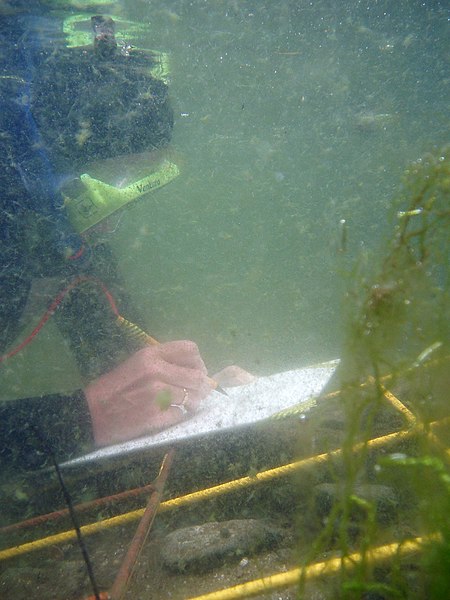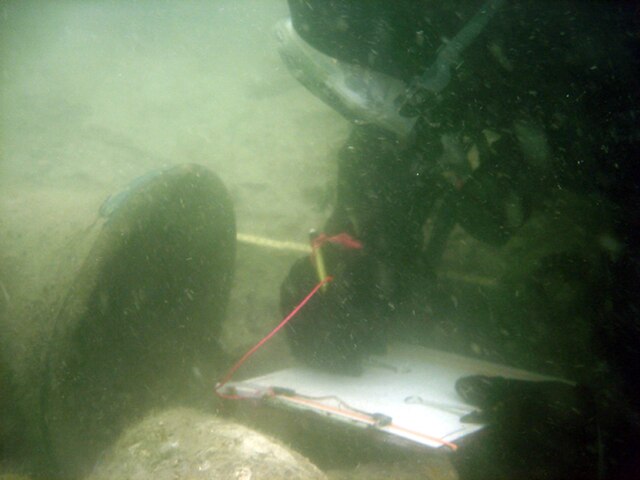Underwater archaeology is archaeology practiced underwater. As with all other branches of archaeology, it evolved from its roots in pre-history and in the classical era to include sites from the historical and industrial eras.
Drawing to scale, underwater
The wreck of E. Russ in Estonia is considered a national heritage monument.
LAMP archaeologist recording a scaled drawing of the ship's bell discovered on the late 18th century "Storm Wreck" off St. Augustine, Florida
Maritime archaeology is a discipline within archaeology as a whole that specifically studies human interaction with the sea, lakes and rivers through the study of associated physical remains, be they vessels, shore-side facilities, port-related structures, cargoes, human remains and submerged landscapes. A specialty within maritime archaeology is nautical archaeology, which studies ship construction and use.
A maritime archaeologist with the Lighthouse Archaeological Maritime Program in St. Augustine, Florida, recording the ship's bell discovered on the 18th century "Storm Wreck."
Submerged bridge under Lake Murray, South Carolina in 160 ft (49 m) of fresh water seen on side-scan sonar imagery using a Humminbird 981c Side Imaging system
The final phases of the salvage of Mary Rose on October 11, 1982.
The bow of Vasa, a Swedish warship that foundered and sank on its maiden voyage in 1628. It was salvaged in 1961 and is now on permanent display at the Vasa Museum in Stockholm.






